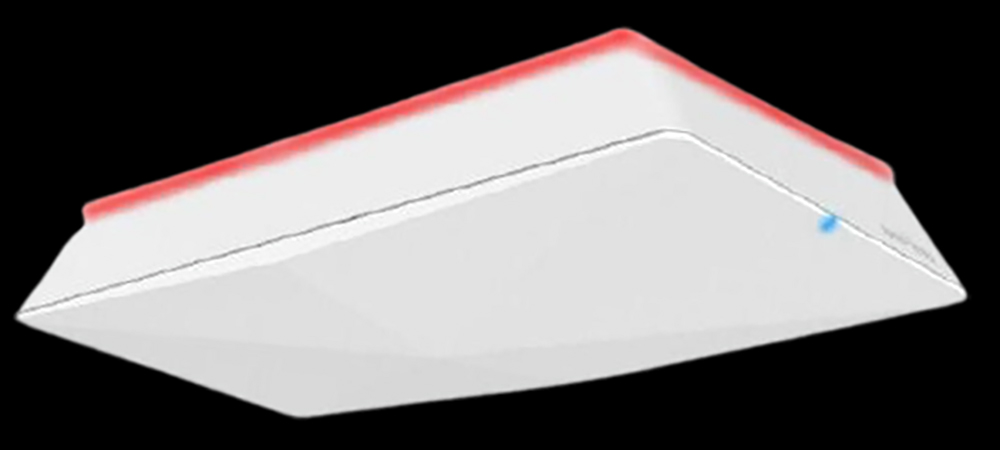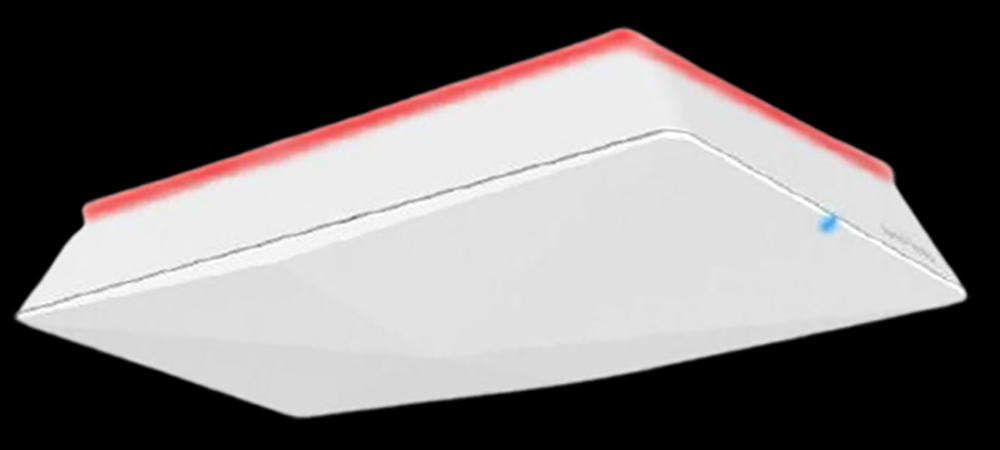Retailers in several North American and Asia-Pacific countries have been deploying a solution released this year by retail technology company Sensormatic Solutions, which employs overhead RFID technology to capture details regarding goods being removed from stores, without requiring visible pedestals or gates. The solution, known as RFID Overhead 360°, leverages Sensormatic’s TrueVUE software and cloud-based server, with an Impinj xSpan gateway mounted in the ceiling to provide stores with electronic article surveillance (EAS) for loss prevention, as well as shrink visibility and analytics. In that way, the company reports, retailers can better understand shrink events taking place and manage inventory accordingly.
Impinj has been working with Sensormatic for more than a decade on solutions for the retail market. In 2017, Sensormatic began deploying custom overhead RFID reading solutions in retail doorways, while RFID Overhead 360° was commercially released in April 2021 as part of the company’s shrink visibility offerings. Businesses now leveraging the solution typically use it as a supplement to their existing RFID inventory-management systems, says Craig Szklany, Sensormatic Solutions’ VP of solutions management and marketing.

The RFID Overhead 360° system
The solution is designed to deliver data required to trigger alarms in real time, according to Ashley Burkle, Impinj’s director of business development, with the xSpan UHF RFID gateway. However, Sensormatic’s shrink visibility analytics software also provides loss insights in real time about goods being removed from a store, whether as a single shoplifting event, organized retail crime or employee theft.
Retail shrinkage poses an increasing challenge for stores due to economic and pandemic-based factors. Throughout the past year, Szklany says, “There is a strong interest in extending RFID technologies for loss prevention across the global retail industry.” Loss prevention has always been a top priority for retailers, he notes, though the pandemic has led to several contributing factors causing a rise in organized retail crime.
According to Szklany, mask mandates may make it more difficult to identify perpetrators, even if they are caught on video. Decreased demand for in-store shopping has led to staffing reductions, in some cases, resulting in fewer employees being available to monitor threats. Additionally, while social-distancing guidelines helped to keep customers safe, they also made it harder to keep tabs on spread-out shoppers. Thus, Sensormatic has been providing its solution to help retailers know which specific items go missing, as well as when and how this occurs.

Craig Szklany
The RFID Overhead 360° solution leverages one or more readers at the exit to provide data to the TrueVUE software. Stores can identify shrink patterns and determine better ways in which to protect merchandise and manage inventory. “It provides a perspective [that] retailers haven’t had before,” Burkle states. “It allows them to stop reacting and be more proactive.” Each retailer’s needs are unique, Szklany explains, and deployments thus vary from store to store. Because every retail installation is unique, he says, “We designed this solution to complement store designs and configuration flexibility.”
That meant providing varied mounting options to cover anything from wide exits to standard doors, by cascading the readers above the entrance. “Our retail store operations and technology experts work with each retailer to identify optimized configurations for each store,” Szklany says. That includes accommodating changes to the floor, such as seasonal displays, which can pose challenges to RFID tag reading. “RFID technology and its implementation has advanced to the point when even the most challenging organized retail crime techniques have difficulty evading.”
With each deployment, Szklany says, the gateways are mounted in the ceiling to create a discreet design. In most cases, the stores already have RFID tags on their merchandise for inventory-management purposes, but the tags can also be applied specifically for shrink management, to be read by the RFID Overhead 360° system. The unique ID number encoded on each tag is linked to the specific product to which it is attached, such as a red jacket, in the store’s inventory-management system, as well as in the TrueVUE software.

Ashley Burkle
As each tagged item is removed through the door, the xSpan gateway captures its unique ID, and the device’s firmware interprets the data and forwards it to Sensormatic’s Storefront Visibility software, hosted on its TrueVUE cloud-based server. The software is designed to screen out any data from RFID-tagged merchandise that might be near the reader but not passing through it.
The RFID Overhead 360° system is part of a larger shrink-reduction solution that includes the point of sale. At the time of purchase, each item’s EPC RFID number is read by a discretely placed antenna at the sales counter. The RFID labels communicate with the Sensormatic cloud-analytics platform and advise the RFID Overhead 360° system regarding what action to take. The protected storefront will allow merchandise with a verifiably purchased EPC number to pass without sounding an alarm. However, an alarm will be triggered if RFID tags with unread EPCs pass through the gateway.
If a non-purchased item is detected leaving the store, the system enables the store to replenish the goods for inventory purposes, as well as gain an enhanced understanding of loss events at the storefront in the long run, and to target shrink-mitigation efforts more precisely. This reduces the incidence of out-of-stock items and maintains on-shelf merchandise availability. Analytics, on the other hand, provides data for forensic analysis by law enforcement, while also enabling retailer managers to develop proactive shrink-mitigation strategies.
“Other partners who offer loss-prevention solutions leverage our broad product portfolio,” Burklestates, adding that Sensormatic is unique in deploying overhead loss prevention with the xSpan. “When most people think of loss prevention, they think of gates or portals at an exit,” she says. “A standalone solution that is deployed overhead without gates is [rarer] in the market.” RFID data capture at retail doorways has been challenging in the past. As doors become wider, Burkle explains, additional readers need to be deployed. When the devices are overhead, however, stores do not need to block movement or disrupt the aesthetic by adding multiple gates.
Retailers can combine the RFID read data with video to view items as they leave the premises, thereby obtaining a more concrete picture of what happens during loss events. Throughout the past year, Burkle says, Impinj and Sensormatic have both reported seeing momentum around RFID use for loss prevention—and not just involving retailers already tagging products with RFID.” Those already tagging inventory may adopt the technology more quickly, she says, “But we’re seeing companies choosing RAIN RFID so they can use it for loss prevention in order to monitor high-value, high-theft risk.”
At present, Szklany reports, Sensormatic’s RFID Overhead 360° solution is being used most often as an alternative to acoustic-magnetic and radio frequency EAS systems, though it can also overlay traditional EAS technologies to provide additional insights. “Leveraging RFID technology for inventory intelligence is a high-value business investment,” he says. “Extending that investment into a loss-prevention strategy makes a lot of sense for retailers.”


